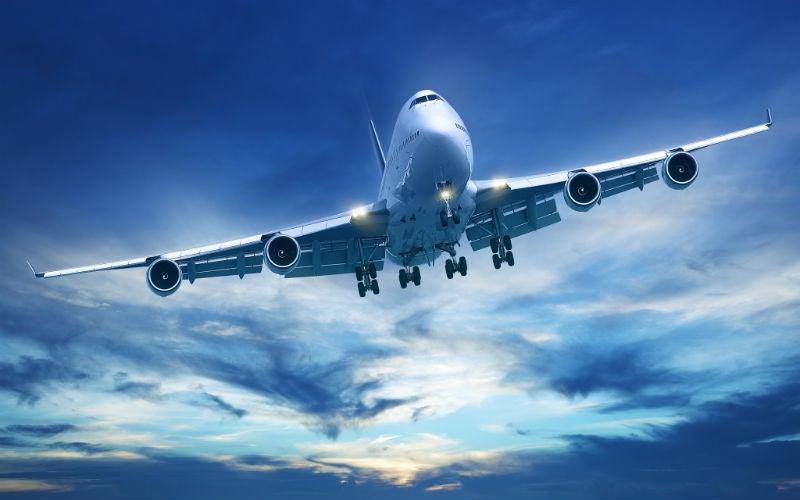Airplanes to Fly Fancy-Free Under Weak Global Carbon Rule
Airplanes could generate 43 gigatonnes of planet-warming pollution between 2016 and 2050—consuming almost 5 percent of the world’s remaining carbon budget—and the UN is letting the industry get away with it.

This page was published 9 years ago. Find the latest on Earthjustice’s work.
Air travel may feel weightless, but it takes a heavy toll on the environment. Aircraft are a significant source of greenhouse gas pollution; they emitted about 700 million metric tons of CO2 in 2012, according to a recent EPA study. To put that in perspective, emissions from aviation are roughly equivalent to the entire CO2 emissions of Germany.
Last month, the environment committee of the International Civil Aviation Organization (ICAO) recommended the first international standards for carbon pollution from airplanes. Unfortunately, these proposed standards would exclude all planes already in service and barely trim carbon emissions from new planes, effectively offering little reduction in emissions below business-as-usual.
“These standards set the bar embarrassingly low, ensuring that almost all aircraft will already meet the requirements well before they go into effect in 2023,” says Sarah Burt, Earthjustice’s legal expert on aircraft pollution. “The aviation industry is sandbagging, which seriously hinders our efforts to meet the commitments we made in Paris.”
The recent proposal from ICAO—which was first assigned the responsibility of addressing greenhouse gas emissions 18 years ago and has since failed to adopt a single binding climate policy—will make almost no dent in emissions from aircraft for the foreseeable future. Given that airplanes have a lifespan of 20-30 years, the rule applies only to new aircraft and won’t go into effect for four to seven years, and ICAO set the stringency at 2016 technology levels, it will be a weak standard indeed. Without a more meaningful action, aircraft—currently the fastest-growing source of transportation emissions—will continue to dump increasingly large amounts of CO2 into the atmosphere.
What about national action? The Center for Biological Diversity and its allies, represented by Earthjustice, petitioned the EPA in 2007 to regulate carbon emissions from aircraft as required by the Clean Air Act. Following a lawsuit, a federal court reaffirmed the EPA’s responsibility to regulate greenhouse gas emissions and then ordered the EPA to investigate the environmental impact of aviation emissions. In 2015, the EPA finally proposed to issue a finding that greenhouse gas emissions from airplanes do indeed threaten human health and contribute to climate change. While this finding is a necessary first step toward controlling these harmful emissions, the EPA proposes to simply replicate the weak ICAO standard.
This is not enough to satisfy U.S. legal requirements. If EPA doesn’t do better than the woefully inadequate ICAO proposal, it is likely to face lawsuits to compel a stronger standard that would reduce emissions and accomplish the Clean Air Act’s goals of protecting health and the environment.
“These disturbingly weak recommendations put the Obama administration under enormous pressure to fight airplane pollution’s threat to our climate,” said Vera Pardee, a Center for Biological Diversity attorney who has sued the federal government over aviation emissions. “The EPA has a legal and moral obligation to address the aviation industry’s skyrocketing carbon pollution. If we don’t cut airplanes’ fast-growing emissions, it will be much more difficult for the world to avoid catastrophic warming.”
Ships and other non-road vehicles and engines are also huge sources of pollution that often get overlooked and under-regulated, but airplanes remain the worst offenders. Due in part to the Obama administration’s carbon regulations, the automobile industry has strongly outpaced aircraft manufacturers in energy efficiency, improving the fuel economy of new cars and trucks by 4 to 8 percent a year in major markets. Aircraft, on the other hand, have improved their efficiency a meager 1 percent a year. It’s time for President Obama to set rules for aviation to rack up comparable gains.
The immediate effects of reducing airplane pollution would be groundbreaking. A recent International Council on Clean Transportation report showed that some of the top 20 transatlantic air carriers can drive down greenhouse emissions by as much as 51 percent using existing technology and operational improvements.
“The Obama Administration has made great strides to improve the efficiency of our transportation sector, doubling the efficiency of passenger cars and trucks and driving new pollution control technologies on freight trucks,” says Earthjustice’s Burt. “It is now time achieve these same results for commercial aircraft by setting strong standards to improve efficiency and reduce carbon pollution.”
The International Program partners with organizations and communities around the world to establish, strengthen, and enforce national and international legal protections for the environment and public health.